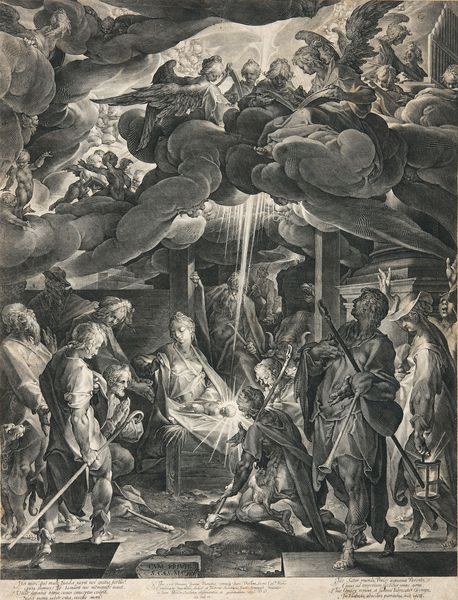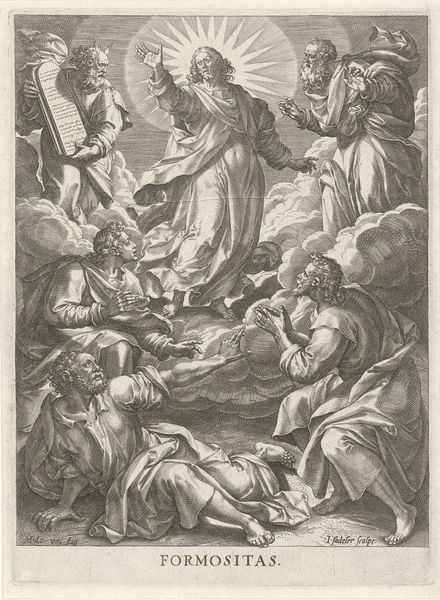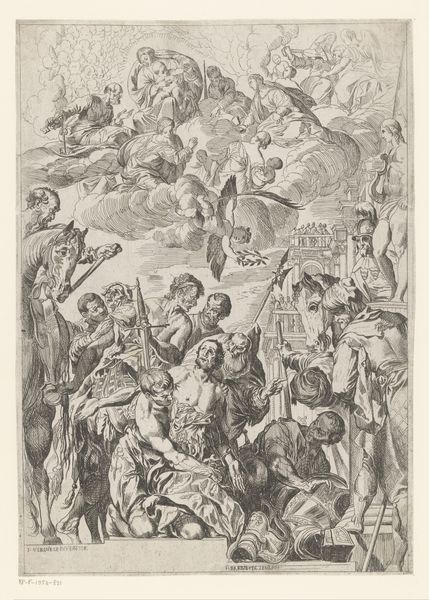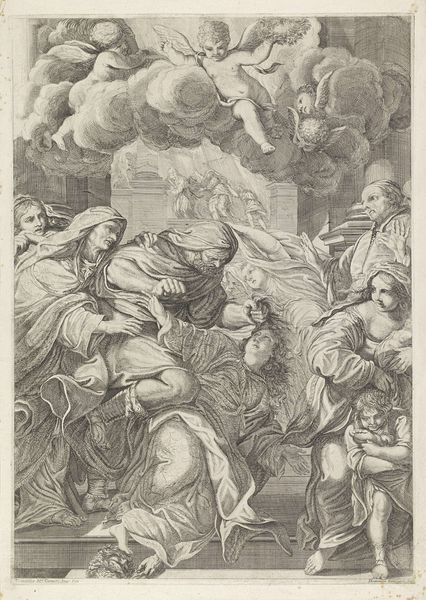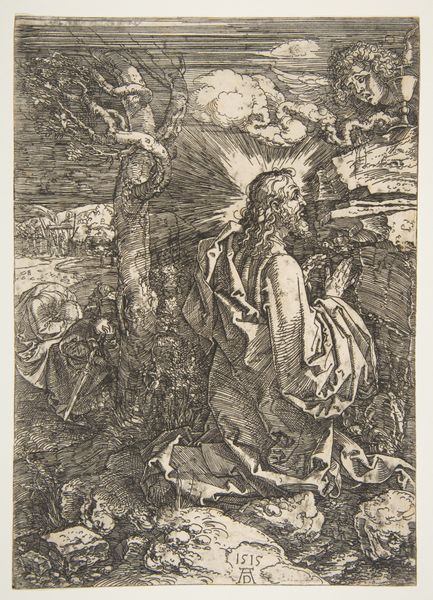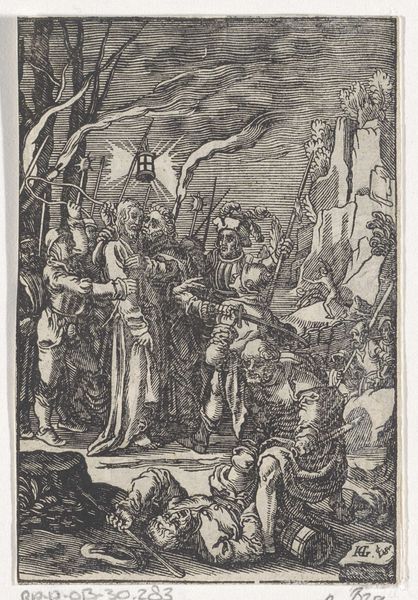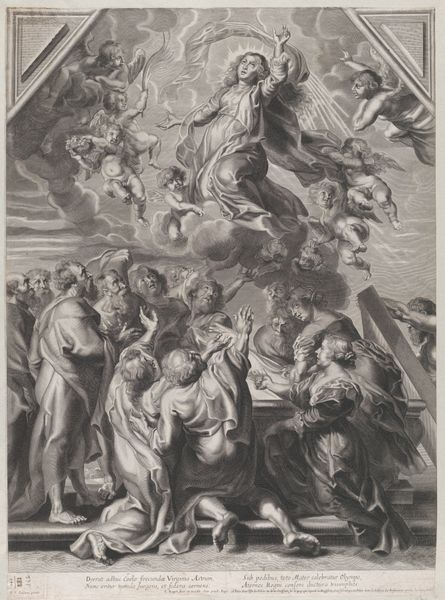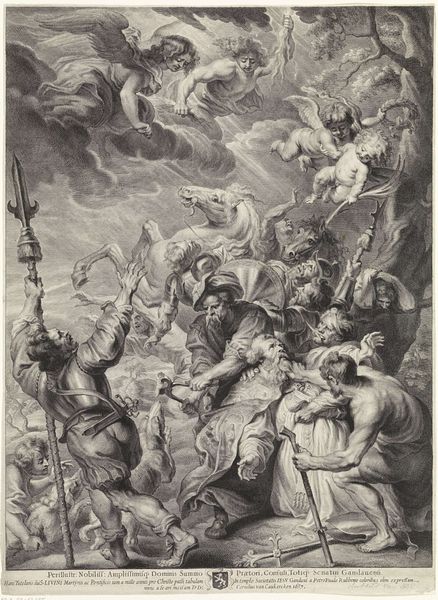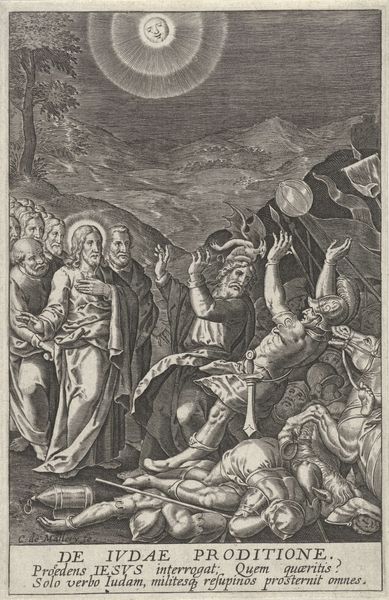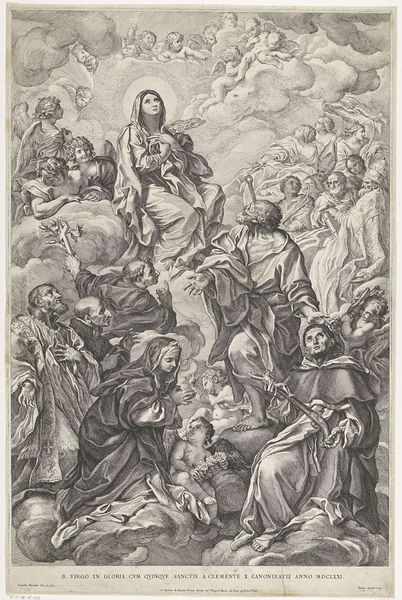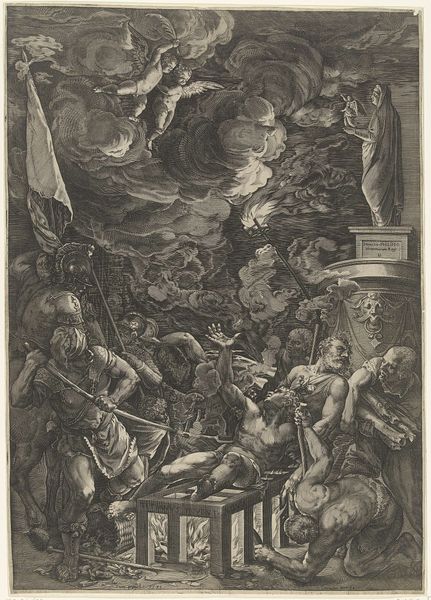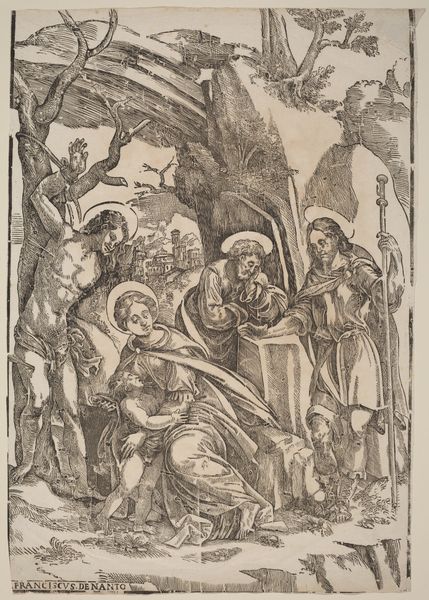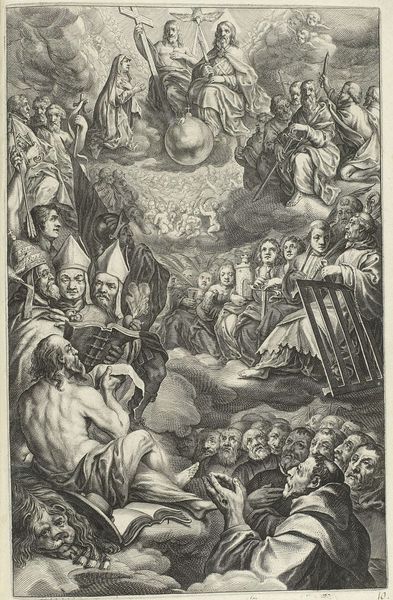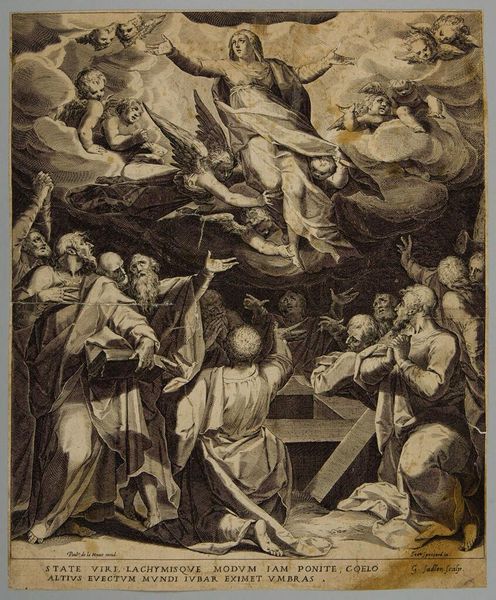
print, engraving
#
narrative-art
#
baroque
# print
#
figuration
#
history-painting
#
engraving
Dimensions: 564 mm (height) x 430 mm (width) (bladmaal)
Curator: This engraving is Jan Harmensz Muller’s, "The Adoration of the Shepherds," dating to 1606. It’s part of the collection at the Statens Museum for Kunst. Editor: Wow, the dynamism is striking, even for such a traditional religious scene! Look at those billowing clouds—they really emphasize the drama of the event. And the textures seem so richly detailed for a print. Curator: The scene captures the moment when shepherds, guided by angels, arrive at the manger to see the newborn Jesus. Notice how Muller uses light. The radiance emanating from the Christ Child isn't just illuminating; it's a divine declaration. The composition is layered, literally ascending from earthly adoration to heavenly approval. Editor: Absolutely. The material process really supports the theology here. Think about it—engraving is a process of taking away, of controlled subtraction. It mirrors the narrative of Christ's humility, the divine emptying itself to enter the human realm. It's so laborious and considered, especially contrasted with the spontaneous-feeling clouds, rendered meticulously with radiating, hatched lines. What paper was used I wonder? Curator: Good point. The dark background heightens the symbolic power, framing Christ as the singular source of hope. And consider the shepherds themselves; they represent not just the common people, but the faithful at the margins of society. Their inclusion carries a potent message about universality. Editor: I agree, it’s definitely a carefully-planned composition. You see Muller demonstrating what the printmaking process, using the reproductive capacities of the press, could really achieve, spreading ideas and images far and wide. I wonder if any impressions survive colored with paints? Curator: I’m unsure on the coloration, but what this work certainly displays is Muller’s own creative interpretations and dramatic use of chiaroscuro. These things certainly capture the fervor and mysticism so typical of the Baroque style. Editor: Examining the materiality and the hands involved, this print really brings to life the cultural and spiritual climate of its time, from the social stratifications represented in the scene to the very act of artmaking itself. Curator: And for me, looking closely, the engraving serves as a tangible representation of spiritual aspiration. Muller’s work transcends the medium, echoing faith’s enduring visual language.
Comments
No comments
Be the first to comment and join the conversation on the ultimate creative platform.
